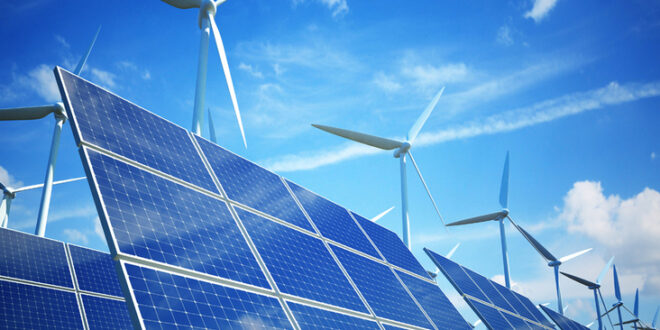The UAE may surpass its target of tripling renewable energy capacity by 2030 due to low clean energy prices and as more solar capacity is installed to produce green hydrogen, the country’s energy minister said on Sunday.
Renewable energy is the cheapest and reduces the levelised cost of electricity – the average cost of generating power over the lifetime of a power plant – Suhail Al Mazrouei said during a panel session at the World Economic Forum’s special meeting in Riyadh.
“We can say with certainty that our plans will be reached and maybe we’ll reach even higher than tripling the capacity [because] it does make sense. It’s the cheapest,” Mr Al Mazrouei said.
“In addition to that, what we’re doing for hydrogen is also going to increase significantly the installed capacity for solar,” he added.
The Emirates, the Arab world’s second-largest economy, aims to reach hydrogen production of 1.4 million tonnes annually by 2031, and 15 million tonnes annually by 2050.
The country is planning to develop at least two hydrogen production hubs, or oases, by 2031.
Gulf countries have been heavily investing in renewable energy while simultaneously lowering emissions from their oil and gas operations as part of their plans to achieve net-zero emissions by 2050 or beyond.
Meanwhile, Qatar’s Energy Minister Saad Al Kaabi said oil and gas producers are “doing their best” on methane abatement and spending billions on carbon capture and storage, but that the industry is not being given enough credit for those initiatives.
“Everybody’s doing it in a very responsible way to make sure that we can develop and have growth … and I think we’re not being given enough credit for doing all that,” Mr Al Kaabi said in a separate panel on Sunday.
Carbon capture, utilisation, and storage (CCUS) involves trapping carbon dioxide emissions from industrial activities such as steel and cement production, as well as from fossil fuel combustion in power generation.
The global CCUS market, which was valued at $1.9 billion in 2020, is projected to reach $7 billion by 2030, growing nearly 13.8 per cent per annum, according to Allied Market Research.
Mr Al Kaabi said crude oil demand will be driven by petrochemicals, while the growing requirement for power generation will rely on natural gas, which is seen as a transition fuel.
“Oil and gas are going to be needed for a very long time. You can debate [on] when is peak [demand for] oil [or] when is [peak demand] for gas but that’s irrelevant in my view,” he said.
His comments were echoed by Saudi Arabia’s energy minister, who was also a part of the panel.
“We also need to be cognisant of the fact that oil and gas is moving. We will move or continue the move from oil to chemicals … because even in the process of electrification, people would need plastics,” Prince Abdulaziz bin Salman said.

 Iran Energy News Oil, Gas, Petrochemical and Energy Field Specialized Channel
Iran Energy News Oil, Gas, Petrochemical and Energy Field Specialized Channel



